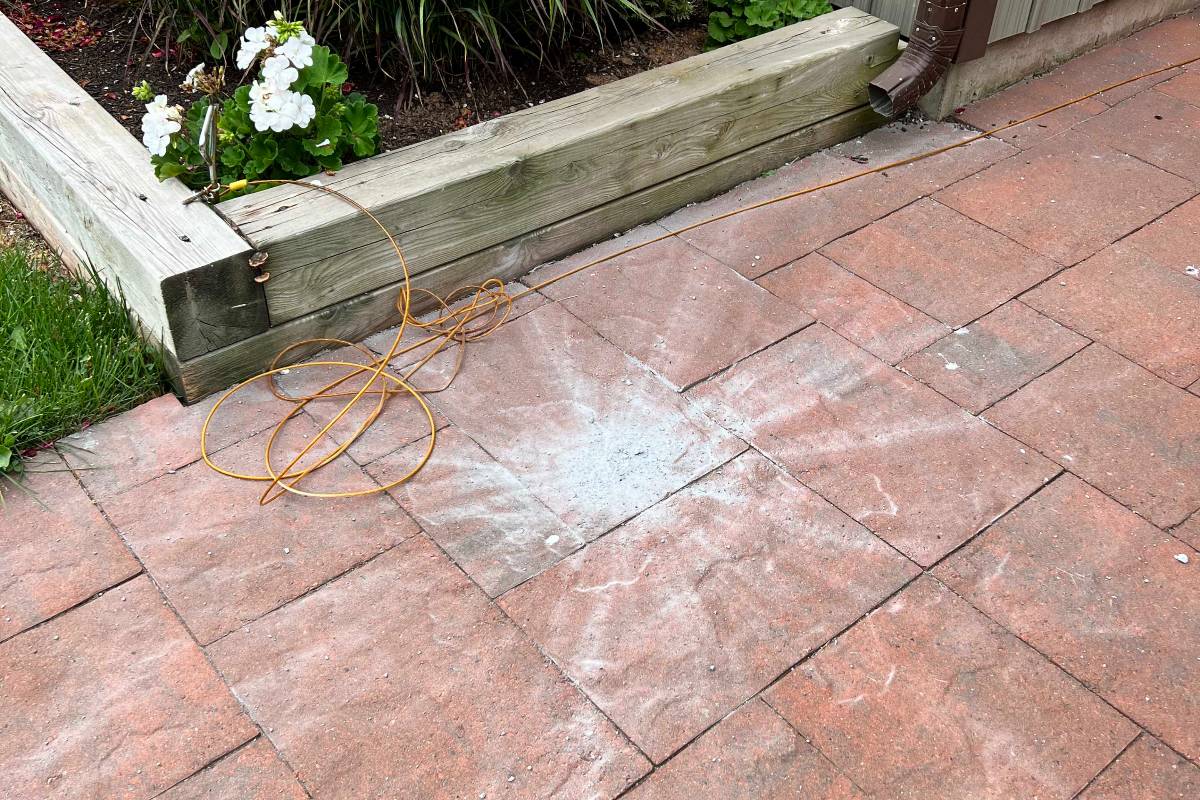Sound and video of meteorite impact recorded together for the first time
15 January 2025
When Laura Kelly and her partner, Joe, returned from an afternoon walk in July 2024, finding a piece of space out front of their Charlottetown, PEI home — the first such discovery in the province’s history — wasn’t on their bingo cards for that day.
On their walkway was a star-shaped pattern of grey dust. Not knowing what it was, the pair brushed it off the walkway. A check of their security camera footage, however, showed an astonishing sight: the exact moment a rock came out of the sky and landed on their path, scattering grey dust and fragments in a spot where Joe was standing only minutes earlier. The rock can only be seen in a couple of frames of the video, which indicates rapid movement, but the exploding dust and sound was undeniable to Laura’s dad, who lives nearby. He heard the impact and then watched the footage.
“My father thought it could be a meteorite and sent us a link to the University of Alberta's Meteorite Reporting System,” says Laura. “I'll admit, we were skeptical at first.”
Laura and Joe quickly recovered about seven grams of the rock, returning to pick up more samples in the coming days using a vacuum and magnet. They also connected with Chris Herd, geologist and professor in the Department of Earth and Atmospheric Sciences and curator of the U of A’s Meteorite Collection — the largest university-based collection in Canada.
The U of A has over 2000 specimens of approximately 450 meteorites from around the world, says Herd, with the expertise and the analysis tools to classify and do research on any type of meteorite.
“On average, we get about 10 inquiries per week, usually via email or the Meteorite Reporting System, and 99.9% of the time, the rocks are not meteorites.”
This was different.
Upon examination of photos of the fragments, Herd confirmed the discovery was, in fact, a meteorite. By chance, he had planned a family trip to Prince Edward Island 10 days after the fall; the trip now included a diversion to Laura and Joe’s place. With the help of some family members, Herd documented the meteorite fragments, measured a 2 x 2 cm divot in the walkway formed by the meteorite’s impact, and recovered a subset of the fragments to become part of the U of A’s Meteorite Collection. Initial analysis shows that the newly-named Charlottetown Meteorite is an ordinary chondrite. The rock that hit the walkway may have been approximately kiwi-sized, with features that help to explain why it broke apart as it hit the ground.
From a science perspective, however, it is far from ordinary.
“As the first and only meteorite from the province of PEI, and possibly the Maritimes, the Charlottetown Meteorite announced its arrival in a spectacular way. No other meteorite fall has been documented like this,” Herd says. “As far as we know — it is the first time that a meteorite falling to Earth has been recorded on video, with sound. It adds a whole new dimension to the natural history of the Island.”
Laura adds, “We are now in awe that a piece of ancient interstellar space could travel millions of miles and land, literally, on our doorstep.”
— with files from Sarah Vernon
Learn more about meteorites here.
Video from the landing site courtesy of Laura Kelly.

